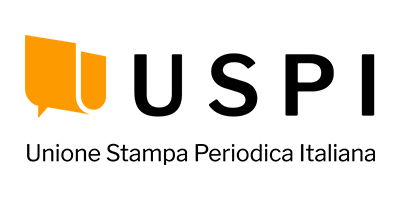Gyala: a new "Made in Italy" cybersecurity
With a proven track record in the defence field, Gyala now also brings its cybersecurity technologies to the wider enterprise audience

Companies active in the Defence sector often create services and products for the civil world as well, expanding their range of activities. In recent years, this ‘contamination’ has increasingly been evident in the cybersecurity market, for obvious reasons. This same evolution led to Gyala, a new Italian cybersecurity company created in 2016 but whose fouders already have many years of experience in Defence, cybersecurity and IT markets.
In 2017, Gyala was funded by the Defence Ministry to develop a new cyberdefence automated system. The resulting platform - Agger - is now offered also to private companies, after Gyala extended its business proposition thanks to a new financing round led by CDP Venture Capital, Azimut Libera impresa and Italian Angels for Growth.
However, the three pillars of Gyala's approach to cybersecurity still stay the same of its Defence original history: integration of IT and OT security, digital sovereignty in cyber security technologies development, attention to data privacy against cybercriminals and state-sponsored actors.

The issue of digital sovereignty is, in particular, prominent for a company that was born in the defence world. But it's also becoming important for private organizations, which by now are well aware that cybersecurity and geopolitics intersect more and more often, and that company data are certainly 'appealing' to criminals, but also to foreign states. So the idea of having cybersecurity companies and technologies that are entirely ‘Made in Italy’ is becoming more and more attractive.
The Agger architecture
Agger presents itself as a transversal IT/OT security platform, based on a multi-layered architecture. At its base is a network of distributed agents, installed in all devices that have enough computing power to support them. Agents not only detect attacks or vulnerabilities, but above all ‘delocalise’ automation and machine learning components as far as possible, to define the baseline behaviour of individual systems and to increase reaction capabilities closer to the attack surface.
Upstream of the agents are Network Security Appliances that monitor and analyse IT and OT traffic. Here, too, machine learning algorithms outline the basic behavioural patterns of the infrastructure, to detect anomalies - signs of a probable attack - and to react as quickly as possible.
Network Security Appliances also monitor and protect those devices that cannot accommodate Agger's agents directly on board. In this sense, Agger also has a specific OT Defence module that remotely control ‘not smart’ objects such as PLCs, to constantly check their availability and integrity and, when necessary, to restore their original firmware and configurations.
Analyses and data collected at the edge of the infrastructure then converge in the actual Agger platform: a console where a correlation engine analyses all events generated by the Agger modules - to trigger specific alarms and remediation procedures - and a Risk Management component maintains a model of the IT/OT infrastructure, linking the likelihood and extent of each potential threat with the impact it would have on services and systems availability.

Behind all this there is obviously a relevant part of threat intelligence, which is more and more important as the number and variety of possible threats and attacks increases. Gyala tries to gather as much information as possible from very diverse sources, in order to have - and thus transfer to customers - a cross-sectional view of the cybersecurity scenario.
From Defence to Enterprise
The mixed IT/OT DNA of Gyala defines the first markets to address approaching the private secyor: Manufacturing, Hospitals, Utilities, Naval industry. All areas where OT is rapidly integrating with IT and where cybersecurity management must increasingly include ‘objects’ of a non-strictly IT nature.
These are also markets where cybersecurity is critical, but managing it is certainly not the core business of user companies. Where, therefore, Agger's automation functions can add more value, by reducing the need for specific people and skills to protect infrastructure.

Francesco Pignatelli
Francesco Pignatelli began his love story with computers and technology at the age of 14, with his ZX81. This led to a career in software development and then in IT and tech journalism. He has spent more than 25 years covering a wide range of IT and tech topics - telecommunications, cyber security, software development, enterprise software, knowledge management - for many of the most important Italian business tech magazines. He is always looking for new digital stuff and still writes unreliable software.
Related news
Last News
RSA at Cybertech Europe 2024
Alaa Abdul Nabi, Vice President, Sales International at RSA presents the innovations the vendor brings to Cybertech as part of a passwordless vision for…
Italian Security Awards 2024: G11 Media honours the best of Italian cybersecurity
G11 Media's SecurityOpenLab magazine rewards excellence in cybersecurity: the best vendors based on user votes
How Austria is making its AI ecosystem grow
Always keeping an European perspective, Austria has developed a thriving AI ecosystem that now can attract talents and companies from other countries
Sparkle and Telsy test Quantum Key Distribution in practice
Successfully completing a Proof of Concept implementation in Athens, the two Italian companies prove that QKD can be easily implemented also in pre-existing…
Most read
Integral AI Unveils World’s First AGI-capable Model
#AGI--Integral AI, a global leader in the development of embodied AGI, today announced the successful testing of the world’s first AGI-capable model.…
Reply Achieves the AWS Agentic AI Specialization and Is Named an Implementation…
Reply [EXM, STAR: REY] announced that it has achieved the Amazon Web Services (AWS) Agentic AI Specialization, a new category within the AWS AI Competency.…
Tecnotree Emerges as CX Catalyst Winner for Impact at The Fast Mode Awards…
Tecnotree, a global digital platform and services leader for AI, 5G, and cloud-native technologies, has won the CX Catalyst award for Impact at The Fast…
CoMotion GLOBAL 2025 Launches in Riyadh: Global Mobility Leaders Unite…
Riyadh is rapidly becoming one of the world's most ambitious urban mobility laboratories, where next-generation technologies move from blueprint to real-world…






